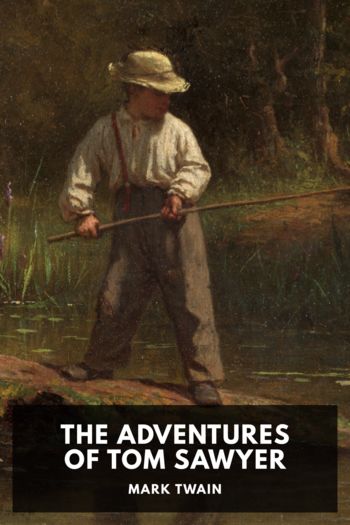The Autobiography of Mark Twain by Mark Twain (good book recommendations .TXT) 📕

Description
The Autobiography of Mark Twain is a collection of reminiscences and reflections. Twain began dictating them in 1870, and in 1906 he published Chapters from My Autobiography in twenty-five installments in the North American Review. He continued to write stories for his autobiography, most of which weren’t published in his lifetime due to a lack of access to his papers, or their private subject matters. After Twain’s death, numerous editors have tried to organize this collection of published and unpublished autobiographical works, producing various differing editions. The most recent attempt is by the Mark Twain Project at the University of California, Berkeley, which published a three-volume edition; but, through what many consider legal trickery, the University of California, Berkeley has claimed copyright on that edition until 2047—137 years after Twain’s death.
This Standard Ebooks production is based on Harper and Brothers’ 1924 collection, compiled by Albert Bigelow Paine.
Read free book «The Autobiography of Mark Twain by Mark Twain (good book recommendations .TXT) 📕» - read online or download for free at americanlibrarybooks.com
- Author: Mark Twain
Read book online «The Autobiography of Mark Twain by Mark Twain (good book recommendations .TXT) 📕». Author - Mark Twain
“But you had already spent so much money on the thing that I hadn’t the heart to ask you to spend any more.”
If I had asked him why he didn’t draw on his own pocket, he would not have understood me. He could not have grasped so strange an idea as that. He would have thought there was something the matter with my mind. I am speaking honestly; he could not have understood it. A cancer of old habit and long experience could as easily understand the suggestion that it board itself awhile.
In drawing contracts he is always able to take care of himself; and in every instance he will work into the contracts injuries to the other party and advantages to himself which were never considered or mentioned in the preceding verbal agreement. In one contract he got me to assign to him several hundred thousand dollars’ worth of property for a certain valuable consideration—said valuable consideration being the regiving to me of another piece of property which was not his to give, but already belonged to me! I quite understand that I am confessing myself a fool; but that is no matter, the reader would find it out anyway as I go along. H⸺ was our joint lawyer, and I had every confidence in his wisdom and cleanliness.
Once when I was lending money to Paige during a few months, I presently found that he was giving receipts to my representative instead of notes! But that man never lived who could catch Paige so nearly asleep as to palm off on him a piece of paper which apparently satisfied a debt when it ought to acknowledge a loan.
I must throw in a parenthesis here or I shall do H⸺ an injustice. Here and there I have seemed to cast little reflections upon him. Pay no attention to them. I have no feeling about him; I have no harsh words to say about him. He is a great, fat, good-natured, kindhearted, chicken-livered slave; with no more pride than a tramp, no more sand than a rabbit, no more moral sense than a wax figure, and no more sex than a tapeworm. He sincerely thinks he is honest, he sincerely thinks he is honorable. It is my daily prayer to God that he be permitted to live and die in those superstitions. I gave him a twentieth of my American holding, at Paige’s request; I gave him a twentieth of my foreign holding, at his own supplication; I advanced nearly forty thousand dollars in five years to keep these interests sound and valid for him. In return, he drafted every contract which I made with Paige in all that time—clear up to September, 1890—and pronounced them good and fair; and then I signed.
Yes, it is as I have said: Paige is an extraordinary compound of business thrift and commercial insanity. Instances of his commercial insanity are simply innumerable. Here are some examples. When I took hold of the machine, February 6, 1886, its faults had been corrected and a setter and a justifier could turn out about 3,500 ems an hour on it, possibly 4,000. There was no machine that could pretend rivalry to it. Business sanity would have said, put it on the market as it was, secure the field, and add improvements later. Paige’s business insanity said, add the improvements first and risk losing the field. And that is what he set out to do. To add a justifying mechanism to that machine would take a few months and cost $9,000 by his estimate, or $12,000 by Pratt and Whitney’s. I agreed to add said justifier to that machine. There could be no sense in building a new machine, yet in total violation of the agreement, Paige went immediately to work to build a new machine, although aware, by recent experience, that the cost could not fall below $150,000 and that the time consumed would be years instead of months. Well, when four years had been spent and the new machine was able to exhibit a marvelous capacity, we appointed the 12th of January for Senator Jones of Nevada to come and make an inspection. He was not promised a perfect machine, but a machine which could be perfected. He had agreed to invest one or two hundred thousand dollars in its fortunes, and had also said that if the exhibition was particularly favorable he might take entire charge of the elephant. At the last moment Paige concluded to add an air blast (afterward found





Comments (0)